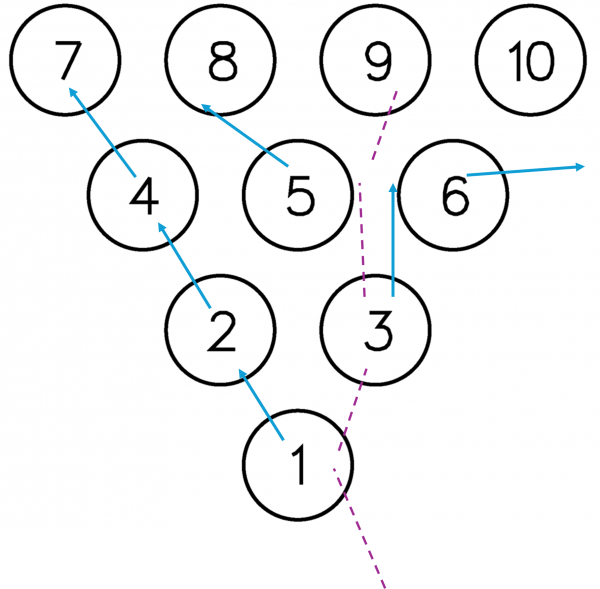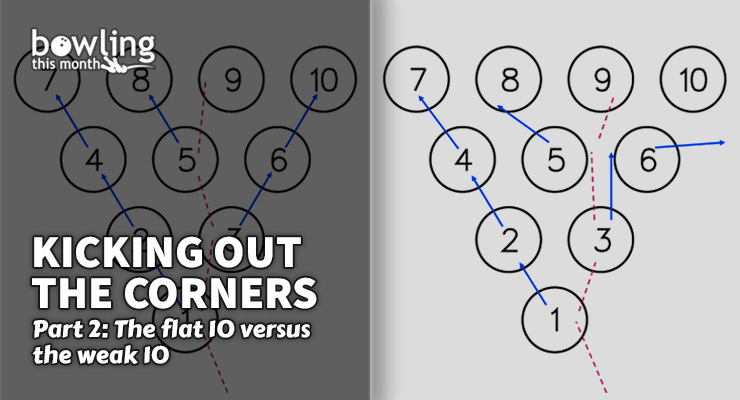Article Contents
- 1. Flat corners
- 2. The flat-flat 10
- 2.1. Other spares you might leave
- 2.2. The solution
- 3. The weak-flat 10
- 3.1. Other spares you might leave
- 3.2. The solution
- 4. Final thoughts
Note: This article is only available to Bowling This Month subscribers.
In the first part of this series, we discussed the solid, or ringing, version of the same-side corner pin. For righthanded bowlers, the 10 pin is one of the most common leaves you’ll see. For lefties, it’s the 7 pin. This time, we’ll discuss the flat version of these leaves. Once again, we’ll focus mostly on the 10 pin, knowing that the 7 pin is simply a mirror image for lefthanded bowlers.
Flat corners
This is a bit tricky, because a flat 10 pin can actually be caused by two different kinds of hits in the pocket. Before we dig into the intricacies of the different kinds of flat corner pins, let’s start with a basic understanding. As we saw in the last article, optimal ball motion and pin carry result in the 6 pin taking out the 10 and the 4 pin taking out the 7.
On flat corners, the 6 pin passes in front of the 10 pin, just like the solid 10. However, the 6 pin is not knocked over with much energy and passes even farther in front of the 10 pin before lying meekly in the gutter. While this is the end result of the pin deflection, there are actually two different kinds of hits at the pocket that have this same result.
Because both kinds of corner pin can be referred to as “flat,” I’ll refer to these different leaves by the kind of impact the ball has at the pins. The two kinds of flat 10 pins are caused by either a flat hit in the pocket or a weak hit in the pocket. The reason it’s important to differentiate between the two is that they require different adjustments, even if the pin action looks very similar.
The flat-flat 10
On a true flat 10 pin, the ball hits flat in the pocket as well. This occurs when the ball has lost far too much energy before getting to the pins. It deflects a bit too much off the headpin so that it hits too much of the 3 pin. As a result, the 3 pin barely hits the 6 pin, and it just kind of lies in the gutter in front of the 10 pin.

True flat 10 pin leaves see the 6 pin lying in the gutter, thanks to the ball over-deflecting through the pins.
One of the biggest signs that you’ve created this kind of flat hit can be seen by examining where the ball leaves the pin deck. The ball over-deflects off the headpin and continues to deflect off the 5 pin ...
Already a premium member? Click here to log in.


